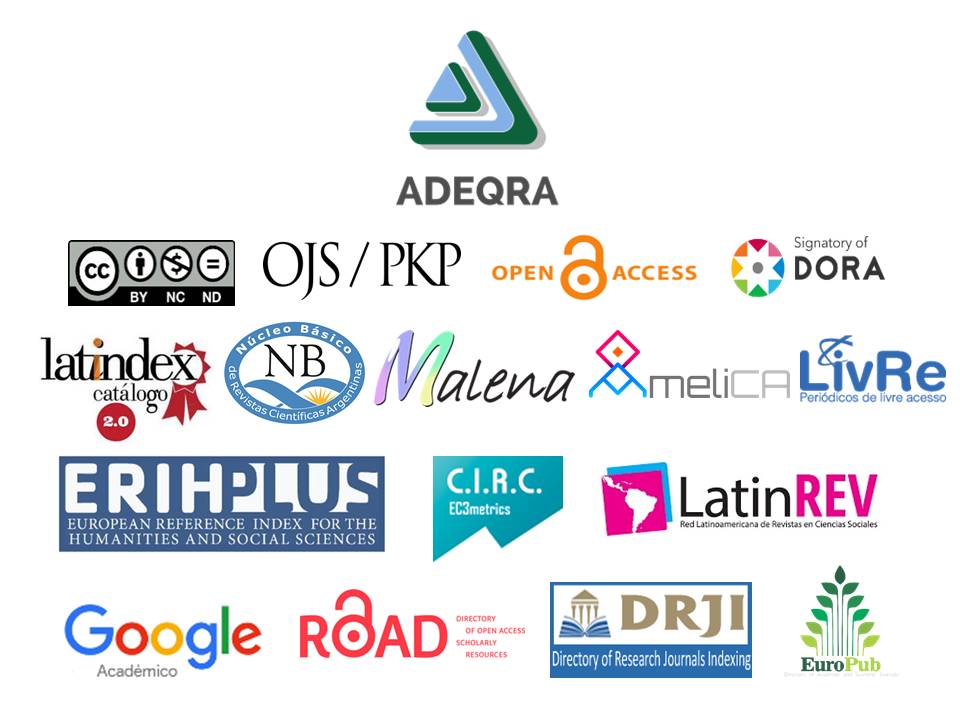Cosmetics and interdiscipline: the first steps of a possible scenario
Keywords:
cosmetics, STEAM approach, interdisciplineAbstract
One of the aims of this research is to find through a preliminary opinion poll, distributed on a Google form, which are the most used cosmetics, identify the factors that influence their consumption and what are the interests or concerns of the population in terms of their quality and composition. Among the most used cosmetics, lipsticks were selected, not only because their positive qualities (aesthetics, social, cultural, etc.), but because they can be absorbed by skin and digestive system. Another aim was to generate educational projects within the areas Science, Technology, Engineering, Arts and Mathematics (STEAM), that will be developed in “Química Verde y su enseñanza en la construcción de un future sostenible” Seminar. The knowledge learned in the seminar will be approached to the community, by teachers in training and already trained.
References
Administración Nacional de Medicamentos, Alimentos y Tecnología Médica (ANMAT). (1998). Resolución ex Ministerio de Salud y Acción Social N° 155. [Archivo PDF]. Consultado en http://www.anmat.gov.ar/webanmat/Legislacion/Cosmeticos/Resolucion_1998_155.pdf
Administración Nacional de Medicamentos, Alimentos y Tecnología Médica (ANMAT). (2019a). Disposición DI-2019-2196-APN-ANMAT#MSYD. Anexo I: “Guía Referencial para la Evaluación de Seguridad de Productos Cosméticos, para la Higiene Personal y Perfumes”. Consultado en https://www.boletinoficial.gob.ar/detalleAviso/primera/203264/20190314
Administración Nacional de Medicamentos, Alimentos y Tecnología Médica (ANMAT). (2019b). Disposición 8079/2019 DI-2019-8079-APN-ANMAT#MSYDS. Anexo I: “Requisitos Técnicos para Productos de Higiene Personal, Cosméticos y Perfumes”. Consultado en https://www.boletinoficial.gob.ar/detalleAviso/primera/217994/20191003
Bilal, M., Mehmood, S. y Iqbal, H. (2020). The beast of beauty: environmental and health concerns of toxic components in cosmetics. Cosmetics, 7(1), 13-31. https://doi.org/10.3390/cosmetics7010013
European Comission. (2009). Regulation (EC) N° 1223/2009. Consultada en https://eur-lex.europa.eu/legal-content/ES/TXT/HTML/?uri=CELEX:02009R1223-20210823&from=EN
González Minero, F. J. y Bravo Díaz, L. (2017). Historia y actualidad de productos para la piel, cosméticos y fragancias. Especialmente los derivados de las plantas. Ars Pharmaceutica, 58(1), 5-12. https://dx.doi.org/10.4321/s2340-98942017000100001
Jung, I. H., Kim, J. H., Yoo, Y. J., Park, B. Y., Choi, E. S. y Noh, H. (2019). A pilot study of occupational exposure to pathogenic microorganisms through lip cosmetics among dental hygienists. Journal of Occupational Health, 61(4), 297-304. https://doi.org/10.1002/1348-9585.12047
Li Y., Liu Z., Zhang Y., Jiang L., Cai Y., Chen X., Zhou X., Li H., Li F., Zhang J. y Liu C. (2021). Investigation and probabilistic health risk assessment of trace elements in good sale lip cosmetics crawled by Python from Chinese e-commerce market. Journal of Hazardous Materials. 405:124279. https://doi.org/10.1016/j.jhazmat.2020.124279
Lorenzo M. G. (2020). Abordaje interdisciplinar para la enseñanza de las ciencias y la actualización de profesores. Educación En Ciencias Biológicas, 5(1), 1-9. https://doi.org/10.36861/RECB.5.1.2
Lwin, T., Myint, C.Y., Win, H.H., Oo, W.W. y Chit, K. (2020) Formulation and Evaluation of Lipstick with Betacyanin Pigment of Hylocereus polyrhizus (Red Dragon Fruit). Journal of Cosmetics, Dermatological Sciences and Applications, 10, 212-224. https://doi.org/10.4236/jcdsa.2020.104022
Orazi, S. y Reyes Pontet, M. D. (2020). Encuesta virtual PUE: metodología de diseño, difusión y nivel de respuesta. Instituto de Investigaciones Económicas y Sociales del Sur; Documentos de trabajo (PUE), 11, 3-11-2020; 1-29. https://ri.conicet.gov.ar/bitstream/handle/11336/127023/CONICET_Digital_Nro.16d0a848-7c73-47ac-b3fa-e7e85d6b2909_B.pdf?sequence=6&isAllowed=y
Parizi, M.G., Sedaghat, Z., Mazloomi, M. y Fararouei M. (2021). Serum level of lead and cadmium is linked to facial cosmetics use among Iranian young women. Environmental Science and Pollution Research, 28(11), 13913-13918. https://doi.org/10.1007/s11356-020-11618-x
Rasheed, N., Rahman, S. A., y Hafsa, S. (2020). Formulation and Evaluation of Herbal Lipsticks. Research Journal of Pharmacy and Technology, 13(4), 1693-1700. https://doi.org/10.5958/0974-360X.2020.00306.6
Real Academia Española. (adj.). Cosmético. En Diccionario de la lengua española. Recuperado el 22 de septiembre de 2021, de https://dle.rae.es/cosm%C3%A9tico?m=form
Richard, C. (2021). Lipstick Adhesion Measurement. Surface Science and Adhesion in Cosmetics, 635-662. https://doi.org/10.1002/9781119654926.ch18
Schaffer, S. E. (2007). Reading our lips: The history of lipstick regulation in Western seats of power. Food and Drug Law Journal, 62, 165. http://nrs.harvard.edu/urn-3:HUL.InstRepos:10018966
Published
How to Cite
Issue
Section
License
Copyright (c) 2022 Sonia Farenzena, Catalina Sofía, Sandra A. Hernández

This work is licensed under a Creative Commons Attribution-NonCommercial-NoDerivatives 4.0 International License.



